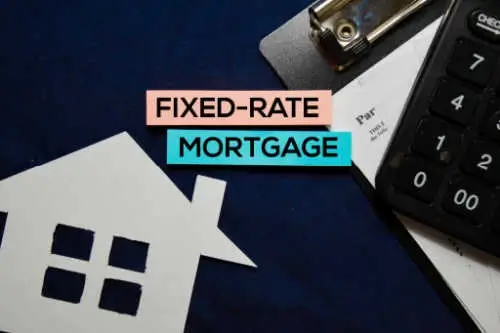
Long-term mortgage interest rates have more than doubled in the past year and hit 14-year highs as of September 2022. If you bought a home in recent years with an adjustable-rate mortgage (ARM), it probably made a lot of sense at the time and helped you save on monthly payments. However, now that rates are jumping your ARM interest rate could start adjusting upward soon, erasing those savings. One way to avoid higher rates might be to refinance into a fixed-rate mortgage.
Market Interest Rates
One of the factors to consider before refinancing is what is happening with interest rates in the greater economic market. The Federal Reserve has increased its target rate four times in 2022 with promises to keep raising rates until inflation gets under control. That rate definitely has an effect on mortgages, and it is fairly likely that home loan rates will continue to climb over the next year. While all ARM loans have a maximum limit that the interest rate can increase each year, it could be up to 5% higher than your current rate. That would significantly raise your monthly payments. The bottom line here is that it is often smart to refinance out of an ARM into a fixed rate mortgage when interest rates are on the rise.
Your Credit Score
Being able to qualify for a refinance loan is important too, though. If your credit score is not great right now, it could make it difficult to get a new loan approved. If you do qualify, you aren’t likely to get the best rates and terms, which means you may still end up paying a higher amount in your mortgage. If you have more time before your ARM starts adjusting, you might do yourself the biggest favor by working to improve your credit score by making timely payments and paying down your debts.
Your Long-term Plans
While you may be nervous about the higher cost of your ARM loan, you need to consider your long-term plans. If you intend to stay in your current home for years to come, refinancing makes a lot more sense than if you anticipate a move in the near future. That’s because there is a cost to refinancing into a new mortgage.
Refinancing Costs
When you originally got your ARM loan, you probably had to pay some out-of-pocket closing costs. Refinance mortgages also come with closing costs and fees. You may have to pay for appraisal fees, origination fees, credit report search fees, etc. These can run anywhere from 2% to 5% of the new loan balance. For example, if you are refinancing your $300,000 ARM loan into a 30-year fixed-rate mortgage, your closing costs could range from $6,000 to $15,000. In some cases, lenders will let borrowers roll this money into the balance of the loan, but it might increase your monthly payment a little in the process. Make sure that paying the fees and closing costs makes financial sense for your situation.
There is a lot of peace of mind that comes from having a fixed mortgage interest rate. You can count on paying the same amount each month, making it easier to fit into your budget. If you are worried about the fluctuating rates on your ARM loan, refinancing into a fixed-rate mortgage might be a good choice for you.
Give us a call today! We'd love to help you get a fixed-rate mortgage.

